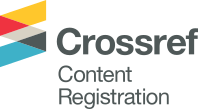Some Peculiarities of Creation of Stable Polyimide - Azo Chromophore System
DOI:
https://doi.org/10.18321/ectj382Abstract
Azo dyes: methyl orange, methyl red, congo red have been suggested as doping agents for formulation of stable soluble azo dye - polyimide (PI) system according to guest-host scheme. The dyes were added to the reactive mixture of monomers: dianhydrides of alicyclic tetracarboxylic acids and aromatic diamines. Polyimide synthesis was carried out by one step polycyclocondensation in protolytic media. Addition of azo dyes influences on the molecular weights of final PIs. In great extent they depend on the nature and concentration of doping agent. Investigation of dependence of reduced viscosity of PI on monomers concentration, duration and temperature of synthesis, concentration of doping agent. It has been determined that addition of dyes to the reaction mixture up to definite value rises molecular weights of PIs
from 45-50 000 up to 320-330 000. The most efficient catalyst is congo red. However some functional groups of azo dyes disturb equimolarity of the reaction by interaction with one of main monomers. The colour of thus doped PIs is stable under processing and high temperatures. Stability of the azo dye - polyimide system depends on interaction of NLO agent with polyimide chain. It is suggested that congo red molecules can coordinate with carbonyl groups of polymer. PI films display solvatochromic properties.
References
2. S. Ermer, J.F. Valley, R. Lytel, G.F. Lipscom, T.E. Eck, D.G. Girton, Appl. Phys. Lett., 61, 2272 (1992).
3. H.K. Kim, H.J. Lee, K.H. Kang, Polym. Prepr., 35, 144(1994).
4. I.A. Arhipova, B.A. Zhubanov, B. Kuzhibaeva, et.al., J.Polym.Sci.,A37,880(1995).
5. P.G. Kaatz., Ph. Pretre, U. Meir, P. Gunter, B.Z ysset, M. Stahelin, F. Lehr, Polym.Prepr., 35, N2, 208 (1994).
6. Z. Sekkat., J. Wood, W. Knolt, W. Volksen, V.Y. Lee, R.D. Miller, A. Knoesen, Polym. Prepr., 38, N1, 97 7(1997).
7. R.D. Miller, D.M. Burland, D. Dawson, J. Hedrick, V.Y. Lee C.R. Moylan, R.J.Tweig, W. Volksen, C.A. Walsh, J. Michl, J. Downing, Polym. Prepr., 35, N2, 122 (1994).
8. S.K. Kudaikulova, G.I. Boiko, Book of Abstracts of 4th Intern.Symp. on Polym. for Adv.Technol., PYIII. 3 (1997), Leipzig, Germany.
9. S.K. Kudaikulova, G.I. Boiko, B.A. Zhubanov, M.J. M.Abadie, Scientific Israel – Technological Advances, V.1, N1, 1999, P.3. Accepted paper.
10. B.A. Zhubanov, O.A. Almabekov, Zh.M. Ismailova, Izvest.Acad.Sci. of Kazakstan, 49(1974).
11. B.A. Zhubanov, S.R. Rafikov, O.A. Almabekov, V.P.Derevyanchenko, Izvest.Acad.Sci. of Kazakstan,32(1974).
12. A.Sh. Zainyllina, S.K. Kudaikulova, G.I. Boiko, B.A. Zhubanov, M. Abadie. Scientific Israel-Technolodical Advances, V.3, N1, 2001. Accepted paper.
Downloads
Published
How to Cite
Issue
Section
License
You are free to: Share — copy and redistribute the material in any medium or format. Adapt — remix, transform, and build upon the material for any purpose, even commercially.
Eurasian Chemico-Technological Journal applies a Creative Commons Attribution 4.0 International License to articles and other works we publish.
Subject to the acceptance of the Article for publication in the Eurasian Chemico-Technological Journal, the Author(s) agrees to grant Eurasian Chemico-Technological Journal permission to publish the unpublished and original Article and all associated supplemental material under the Creative Commons Attribution 4.0 International license (CC BY 4.0).
Further distribution of this work must maintain attribution to the author(s) and the published article’s title, journal citation, and DOI.









